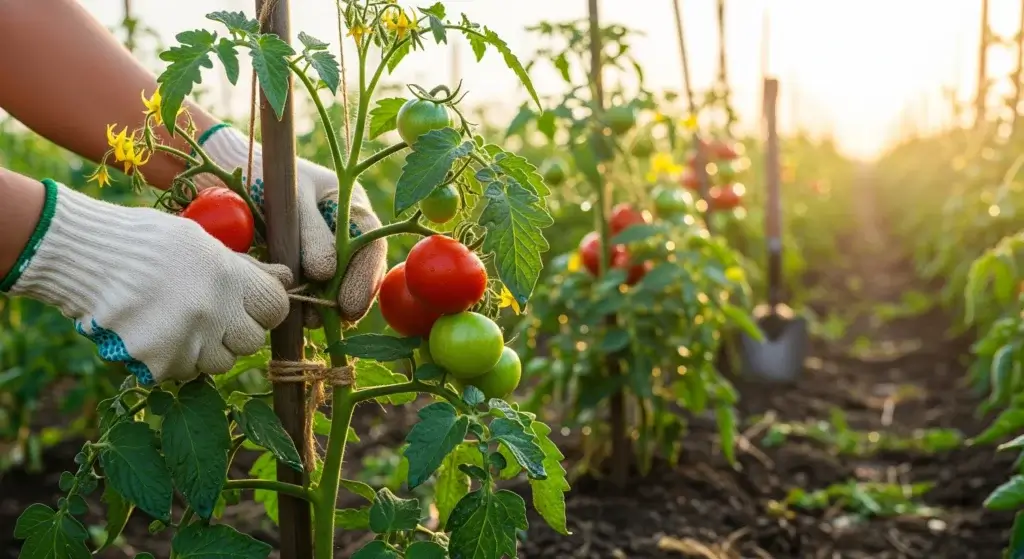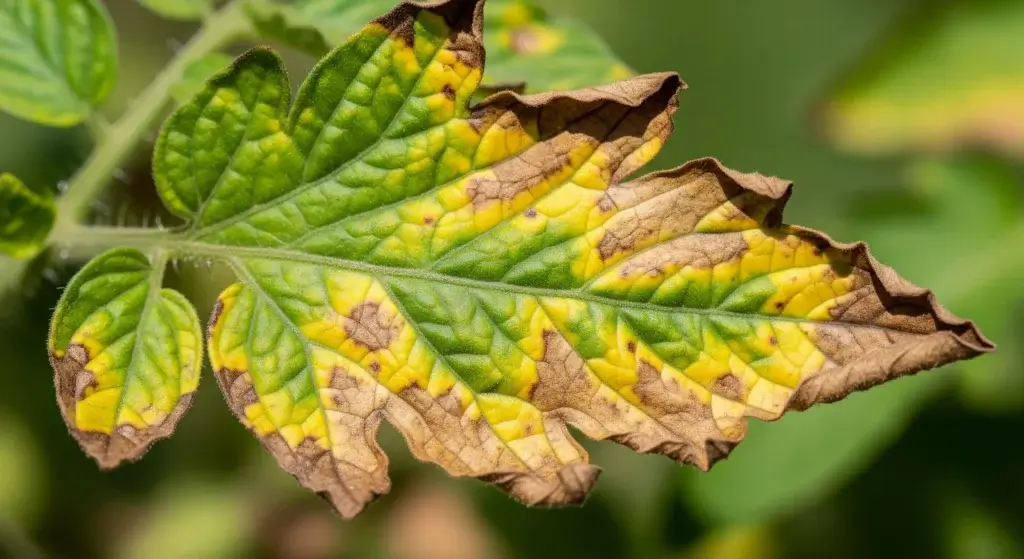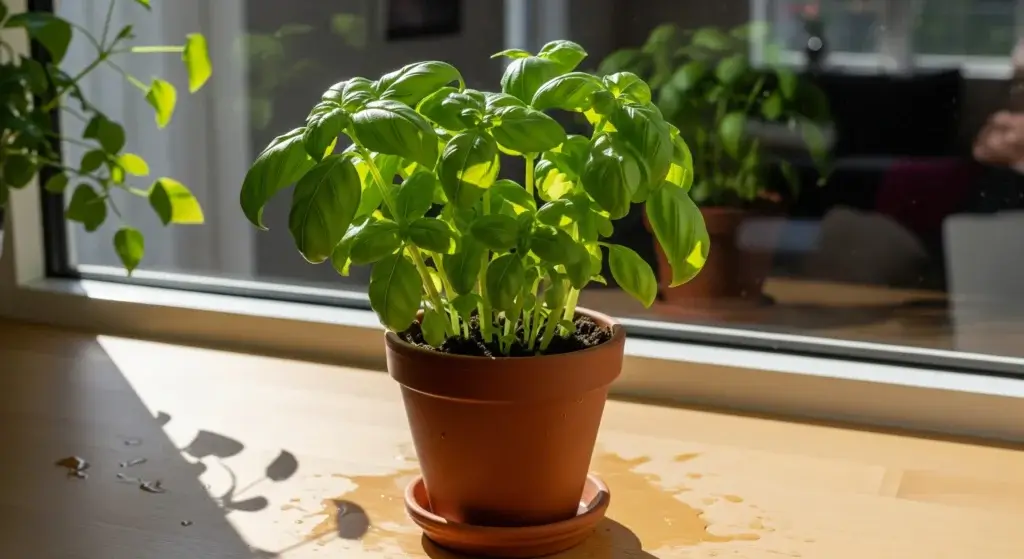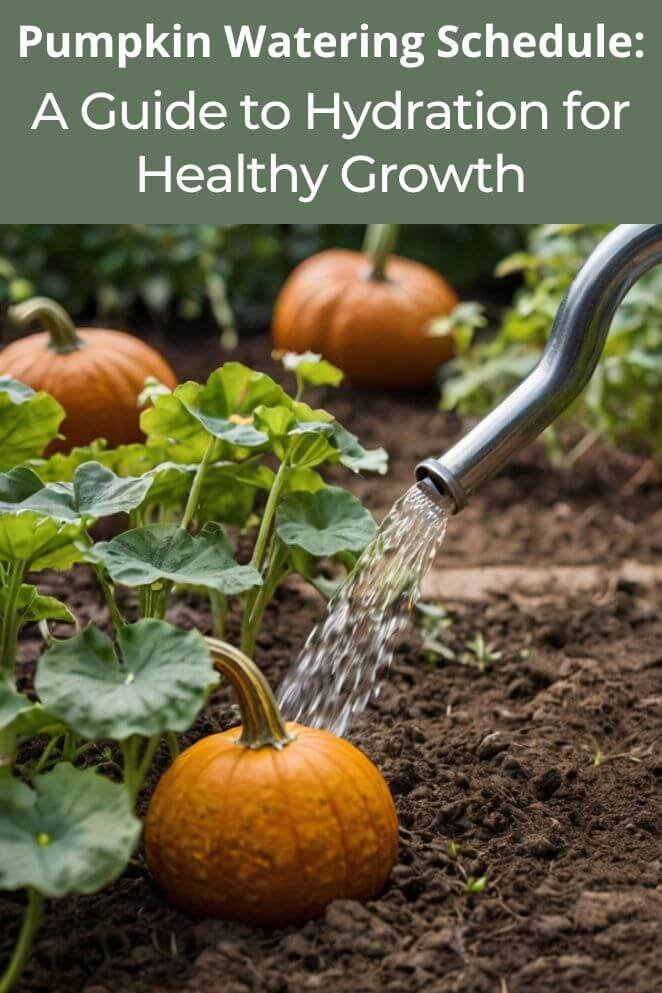
Pumpkins are a fall favorite, known for their vibrant color, versatility in recipes, and use in festive decor.
Growing pumpkins, however, requires proper care, particularly when it comes to watering.
Too much or too little water can affect their growth, yield, and quality, so understanding their watering needs is essential.
Understanding Pumpkin Water Needs
Pumpkins are impressive plants, known for their sprawling vines, vibrant leaves, and, of course, large fruits.
Growing healthy pumpkins requires attention to their unique water needs, as these plants thrive with consistent hydration that supports steady growth, fruit production, and resilience to pests and diseases.
Here’s a look at why proper watering is so crucial for thriving pumpkins:
Large plant structure demands more water
Pumpkin plants spread out over a large area as they grow.
Their vines can extend several feet, and this widespread requires more water to nourish the entire plant.
Unlike compact plants, which need only small amounts of water, pumpkins need a larger volume to reach all parts of the vine.
Pumpkins produce big, broad leaves that help them photosynthesize and grow.
However, these large leaves also mean more surface area for water to evaporate, making consistent hydration essential, especially in hot weather when leaves lose moisture quickly.
- Read also: The Ultimate Spinach Watering Schedule: Timing for Optimal Growth
- Read also: Tips: Watering Schedule for Plants in Hot and Dry Climates
Deep root systems require thorough watering
Unlike shallow-rooted plants, pumpkins develop deep root systems that can reach several feet into the ground.
This depth allows them to draw in moisture from deep within the soil, which is why they benefit most from deep watering rather than light sprinkling.
Deep watering saturates the soil, allowing moisture to reach the lowest parts of the root system.
This steady, slow hydration helps the plant absorb water more efficiently, leading to stronger growth and better fruit development.
Because of their deep roots, pumpkins prefer a consistent watering routine.
Deep, infrequent watering is often better than frequent, shallow watering, as it encourages roots to grow downwards, making them more resilient to dry conditions.
Hydration supports fruit production and quality
When pumpkin plants reach the flowering stage, they need regular moisture to support bloom formation.
Inconsistent watering at this stage can cause flowers to wilt or fall off, impacting fruit production.
Once pumpkins start forming, they require even more water to grow into large, healthy fruits.
Well-hydrated plants produce pumpkins that are firm, plump, and less prone to splitting.
Consistent water levels help avoid issues like uneven or deformed pumpkins.
A stable water supply keeps the growth steady and even, preventing sudden changes that can lead to lopsided or undersized fruits.
Moisture helps protect against pests and diseases
Properly watered plants are naturally stronger and more resistant to disease and pest issues.
Dry, stressed plants are more likely to attract pests like aphids, while fungal diseases often target overly wet foliage.
By maintaining proper root moisture, you help the plant fight off pests naturally.
Watering at the soil level (not on leaves or fruits) reduces the risk of fungal diseases, which thrive in wet conditions.
When the soil stays consistently moist but not soggy, it also prevents root rot and other water-related diseases that can damage or kill the plant.
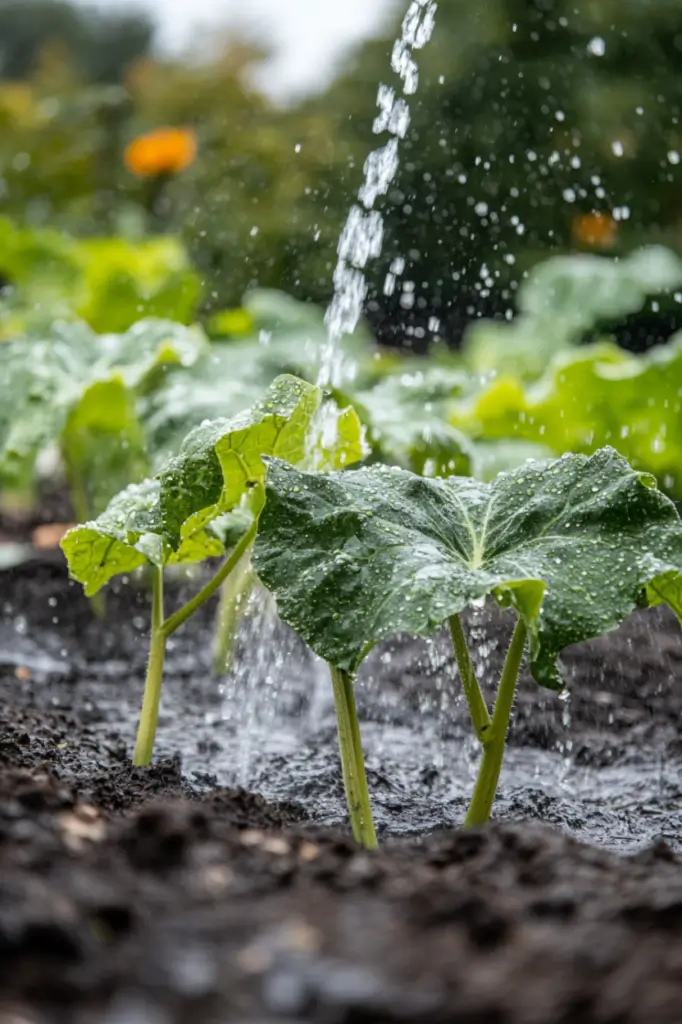
Watering Frequency
The water requirements for pumpkins vary across their growth stages.
Adjusting your watering schedule to match each stage helps maximize their potential.
Seedling stage
- Frequency: Water every 2-3 days.
- Amount: Keep the soil consistently moist without over-saturating.
Tip: Avoid waterlogged soil to protect young roots and prevent fungal diseases.
During this stage, pumpkin seeds need constant but light watering to ensure they sprout effectively.
Use a gentle spray or drip irrigation to avoid washing away seeds or disturbing seedlings.
Vegetative stage
- Frequency: Water every 3-4 days.
- Amount: Increase water as the plants develop leaves and stems.
Tip: Check the soil moisture at least an inch down; if it’s dry, it’s time to water.
As the pumpkin plant grows and produces foliage, it needs more water to support its increasing biomass.
At this stage, the roots start extending deeper into the soil, so deep watering becomes crucial.
Flowering stage
- Frequency: Water every 4-5 days.
- Amount: Provide a steady and deep soak.
Tip: Keep flowers dry by aiming water at the base to prevent rot and fungal issues.
Flowering is a sensitive stage, and consistent moisture is essential. Excess water can harm delicate flowers, but dehydration at this point may inhibit fruit production.
Fruit development stage
- Frequency: Water every 5-7 days.
- Amount: Provide a deep soak, ensuring moisture reaches at least 8 inches into the soil.
Tip: Avoid wetting the fruit directly, as moisture on pumpkins can lead to rot.
As pumpkins begin to form, they demand a significant amount of water to develop in size and quality. Slow, deep watering allows the moisture to reach the root zone, helping the fruit grow plump and full.
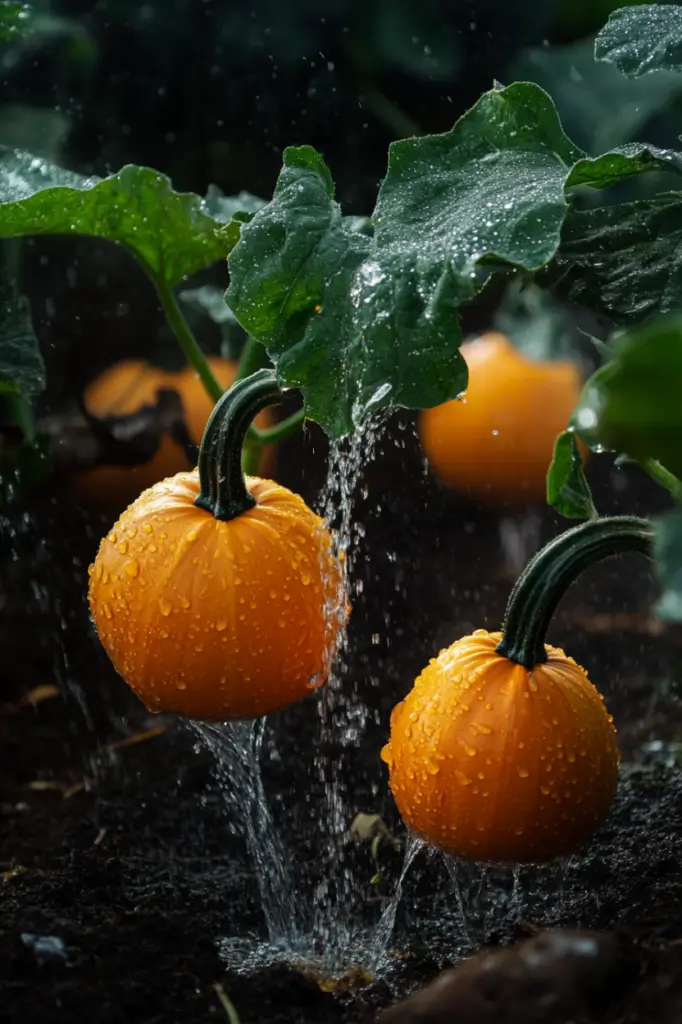
Best Practices for Watering
Knowing how to water pumpkins properly can make a difference in their overall health and yield.
Here are some essential practices:
Time
Water pumpkins in the early morning.
Morning watering gives plants time to absorb moisture before the heat of the day, reducing evaporation.
Avoid watering in the evening, as damp conditions overnight can lead to fungal diseases.
Method
Drip irrigation or soaker hoses are ideal for watering pumpkins, as these methods deliver moisture directly to the roots without wetting the leaves or fruits.
For hand watering, use a watering can and aim directly at the soil near the plant’s base.
Adding mulch around the base helps retain moisture, reduce weed growth, and maintain an even soil temperature.
Signs of Under or Over-Watering
Monitoring pumpkin plants for signs of under or over-watering can prevent serious issues.
Here’s what to look for:
Under-watering signs
- Leaves become wilted or droop, especially during midday.
- Stunted growth and fewer flowers or fruits.
- Soil feels dry when checked several inches down.
Over-watering signs
- Yellowing leaves and soft, mushy stems.
- Fungal growth or mold at the base of the plant.
- Waterlogged soil that remains wet even after a few days.
- Promptly adjusting your watering habits based on these signs can keep your pumpkins healthy and productive.
Adjustments Based on Weather Conditions
Weather plays a major role in how often and how much you’ll need to water your pumpkin plants.
Adapting to changing conditions helps ensure they get the right amount of hydration for healthy growth without over- or under-watering.
Hot, dry weather
- Increased watering needs: In consistently high temperatures, pumpkins lose moisture more quickly due to evaporation. Hot, dry weather can lead to faster soil drying, so increase watering frequency to keep up with the plant’s hydration needs.
- Mulch to retain moisture: A layer of mulch around the base of the plants can help conserve soil moisture. Use straw, compost, or shredded leaves as mulch, which keeps the roots cooler and minimizes water loss.
- Check soil often: During heat waves, check the soil daily by digging down about an inch. If it feels dry at this level, it’s time to water.
Rainy periods
- Avoid over-watering: Rain can saturate the soil quickly, so cut back on your regular watering routine to prevent waterlogged roots. Too much moisture can lead to root rot or fungal issues, which are especially common in consistently wet conditions.
- Monitor soil moisture: After heavy rain, check the soil’s moisture before deciding if the plants need additional water. Digging a few inches down will help determine if the deeper soil is still moist; if it is, wait a few days before watering again.
- Drainage matters: Ensure your pumpkin patch has good drainage to avoid standing water around the roots. If your garden bed tends to retain water, consider adding organic matter to improve drainage or elevating the planting area slightly.
Windy conditions
- Increased moisture loss: Wind can dry out soil quickly, especially on the surface and around the base of the plant. This effect is more pronounced in sandy or loose soils, which lose moisture faster than clay or loamy soils.
- Frequent water checks: During windy periods, check the soil moisture more frequently, especially if the winds are strong. Even if the air temperature isn’t hot, wind can sap moisture from the soil and the plant itself.
- Windbreaks for protection: If possible, create a windbreak using stakes, small fencing, or other plants to shield pumpkins from strong winds. This helps reduce soil drying and keeps moisture levels more consistent.
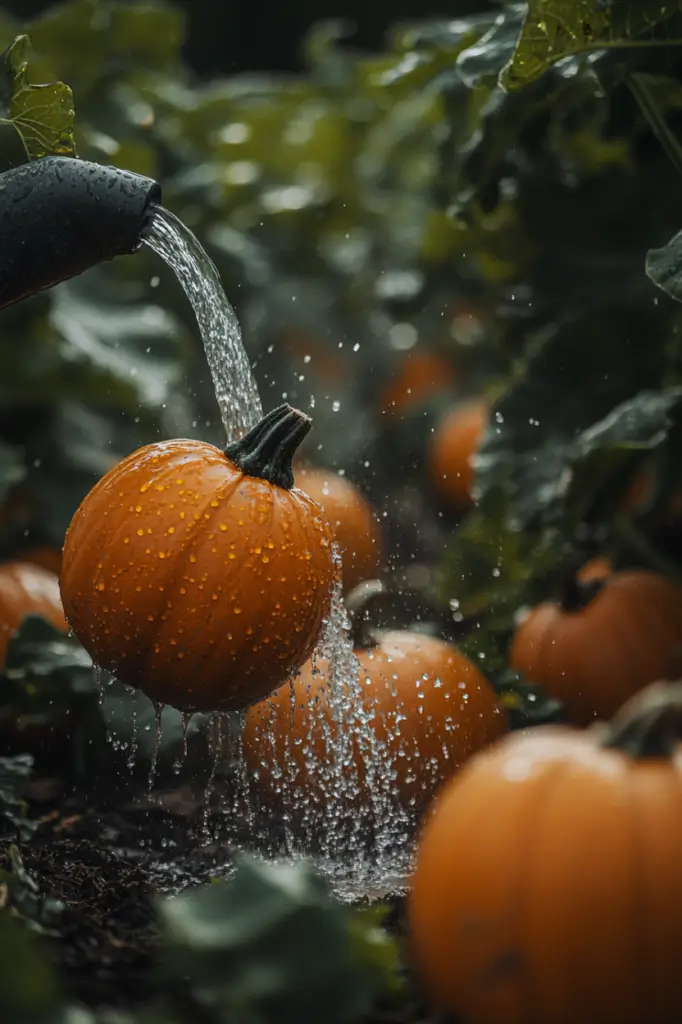
- Read also: Watering Schedule for Plants in Cold and Humid Climates
- Read also: Unlock the Secret: Tomato Plant Watering Schedule
Conclusion
Getting your pumpkin watering schedule right takes some observation and adjustment, but it’s worth the effort.
By understanding each growth stage, following best practices, and keeping an eye on weather conditions, you can help your pumpkins flourish.
A consistent watering routine is key to producing healthy plants and a bountiful pumpkin harvest.
FAQs
Pumpkins are sensitive to drought, especially during flowering and fruiting stages. Extended dry periods can affect their growth and reduce yield.
Drip irrigation is the most efficient way to water your pumpkin plants. However, you can also use a soaker hose or a watering can.
Yes! Rainwater is excellent for watering pumpkins as it is typically free of chemicals found in tap water and can be more beneficial for plant health. Collect rainwater in barrels and use it when needed.

